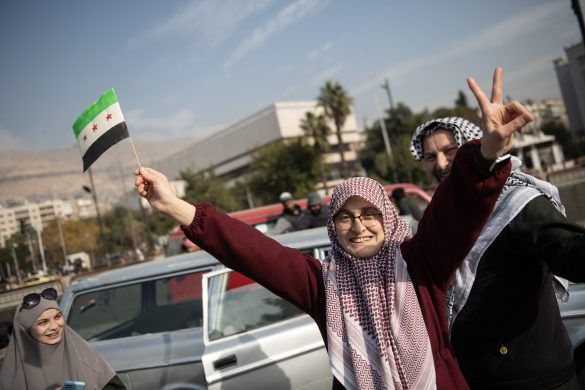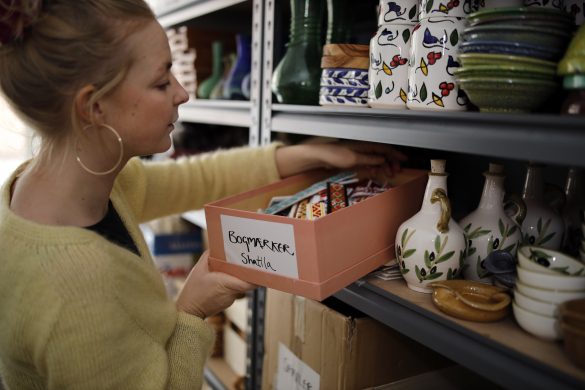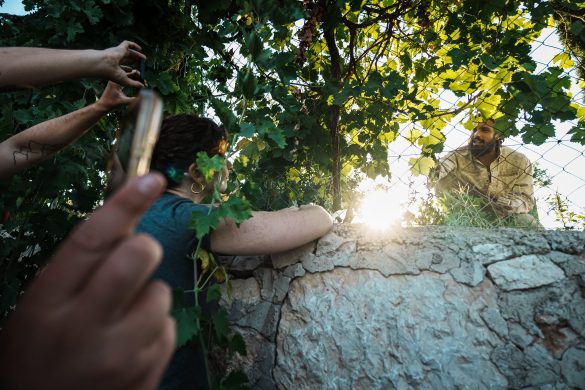Op imod 15.000 palæstinensere på den israelske side af seperationsmuren risikerer at stå uden tag over hovedet, hvis de israelske myndigheder som planlagt sender bulldozere ind i Østjerusalem. Samtidig bygges der på livet løs i israelske områder. Kritikere peger på politisk bestemt demografi som årsagen.
JERUSALEM, 31 January 2014 (IRIN): The threatened demolition (fjernelse) of apartment blocks in East Jerusalem is adding new pressure to the city’s housing crisis, with hundreds facing the prospect of losing their homes and Palestinian residents saying they face discrimination in city planning.
Since the start of construction of the separation barrier a decade ago, poorer Palestinian East Jerusalemites have often chosen to move to the West Bank side of the wall.
In late 2013, Israeli authorities issued court orders announcing that a number of buildings in Ras Shehada and Ras Khamis – Palestinian neighbourhoods inside Jerusalem’s municipal boundary but cut off by the separation barrier – are slated for demolition because they were built without permits.
“With everything that is going on here, I am trying to sell the house,” said Shadi, 26, who owns an apartment in Ras Khamis threatened with demolition.
“If someone comes now with, say, 150.000 NIS (43.000 US dollar)) cash, I am out of here.”
Boligmangel
Because many Palestinian East Jerusalemites prefer to live on the Israeli side of the wall – mostly for access to education, healthcare and jobs – demand for housing there is high.
But severe building restrictions on Palestinian neighbourhoods inside the wall, imposed by the Jerusalem municipality, have created a housing shortage, causing prices to skyrocket in East Jerusalem.
Manglende infrastrukur
For a long time, the Israeli authorities turned a blind eye to building in the Palestinian neighbourhoods of East Jerusalem that lie beyond the separation barrier.
These areas are unplanned and suffer from a lack of infrastructure, lack of services, inadequate garbage collection, and water and electricity shortages.
But they have one major advantage that attracts residents: homes are cheaper than those on the Israeli side of the wall.
And because they are still within the city’s border, these Jerusalem residents can also hold on to their Israeli IDs, without which they would be stateless.
Billige boliger udenfor muren
Shadi explains that while homes cost about 500.000 to 600.000 NIS (143.000 to 172.000 dollar) in Shuafat and Beit Hanina, two of the most desirable neighbourhoods of Palestinian East Jerusalem on the western side of the barrier, his apartment in Ras Khamis cost only 120.000 NIS (34.000 dollar).
Towers of inexpensive apartments have mushroomed in all of the Palestinian East Jerusalem neighbourhoods outside of the wall.
“Here, you will pay 50.000 [NIS] cash and then 2.000 [NIS] each month for four years, not like there [on the Israeli side of the wall], where someone might pay 6.000, 7.000 [NIS] a month [rent].”
Shadi, who is currently unemployed, says that when he is working he brings home about 5.000 NIS a month, just over Israel’s minimum wage.
15.000 hjemløse?
Speaking to the Palestinian news agency Maan, a local activist said as many as 15.000 people could lose their homes if Israel follows through with its planned demolitions in Ras Khamis and Ras Shehada.
Most NGOs put the number much lower; Sari Kronish of the Israeli NGO Bimkom-Planners for Planning Rights estimates that anywhere from hundreds to 1.500 face displacement.
However, Kronish says, “There are many more units without permits than [those that] received demolition orders so far,” making it difficult to know how many could eventually be effected.
Politisk besluttet demografi
The demolition orders – as well as the policies that prevent Palestinians from obtaining permits in the first place – stem from Israeli attempts to maintain particular demographics in Jerusalem, say activists.
Kronish says that after Israel occupied East Jerusalem in 1967, it redrew the municipal boundaries.
The guiding principle of the new borders, she says, was “to add as much land and as few [Palestinians]”; leaving the new ratio of Jewish Israelis to Palestinians in Jerusalem at 70:30.
“Ever since then, the various governments of Israel have made decisions that planning needs to maintain that balance,” said Kronish.
That translates into policies that encourage the expansion of Jewish neighbourhoods but stunt growth in Palestinian areas.
Passiv forflyttelse
“With everything that’s going on here, I’m trying to sell the house” Kronish explains,
“It’s like passive displacement. The Palestinian neighbourhoods have never been planned adequately. Some of them have been planned, but it’s restrictive planning.”
For example, Israeli plans for Palestinian neighbourhoods often designate for housing land that already has homes and other buildings. Kronish adds that, paradoxically, “sometimes even existing homes are left outside the plan for designation for housing.”
Få byggetilladelser
Israeli plans often emphasize green spaces in Palestinian areas, regardless of residents’ needs or how they are using the land.
The Israelis also treat the Palestinian neighbourhoods as “rural” although the areas are increasingly urban.
Building rights for rural areas are limited and include restrictions on both the width and height of structures. Plans for these areas do not keep pace with Palestinian population growth.
Combined, these policies keep the number of building permits very low for Palestinian neighbourhoods.
The few who do manage to obtain permission to build find enormous taxes and municipal fees associated with those permits – expenses that are far beyond what most East Jerusalemites can afford – contributing to the steady stream of people to the areas outside the wall.
Forsømte områder
The Jerusalem municipality told IRIN that Palestinian areas of the city had historically been neglected, but said that it had invested 3 million NIS in the re-zoning of East Jerusalem neighbourhoods in 2011 alone.
“Under Mayor Nir Barkat, the Municipality of Jerusalem has focused considerable effort in upgrading the quality of life for the city’s Arab residents.
Mayor Barkat’s objective is to close the gap that has deepened due to the decades of neglect in parts of the city,” a spokesperson said in a written statement.
Although Israeli policies are pushing Palestinians to the West Bank side of the separation barrier, the movement does not change the overall demographic balance of the city.
But some residents of Ras Khamis believe that the areas of Jerusalem that lie beyond the wall will eventually be handed over to the Palestinian Authority.
Sikkerhedshensyn
Jerusalem’s housing crisis and Israeli threats to demolish buildings in Ras Khamis are “politics”, according to Riad Julani, 40, another resident facing the prospect of demolition.
“[The Israelis] have turned this place into a jungle. There is no security here,” said Julani. He and other residents say that drug dealing and use is rampant in the neighbourhood and that the Israeli authorities choose not to intervene.
“We have kids here, 14, 15, using drugs, and it’s really right in front of the police… We could do an experiment. We could put something that looks like drugs in bags and go to [the Shuafat] checkpoint, and you could take money out in front of the soldiers, and will they come to me or you? No. They don’t care. They don’t care about Arabs.”
Residents also report that houses and business are frequently robbed but say that the Israeli police do not come to help.
Saed Abu Asab, 58, lives in the same building as Julani. He says he prefers Ras Khamis to the apartment that he used to rent in Jerusalem’s Old City, where he, his wife and their five children crowded into one room.
“It would be like, ‘Do me a favour, I want to come in, move a little, I have to go to the bathroom,’” he recalls.
Reflecting on his current situation, he adds, “Now, [the Israelis] are talking about making a demolition here, but why do they let [Jewish Israelis] build in Pisgaat Zeev [an Israeli settlement] and not [us] here?”
Still, even under the looming threat of demolition, the housing boom outside the separation barrier continues.














